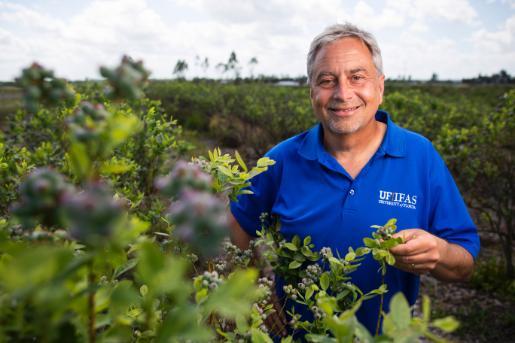By Clint Thompson
Last weekend’s heavy rains in South Florida reminds the state’s blueberry producers the vulnerability of their crop during hurricane season.
The combination of strong winds and prolonged rain showers provide a threat to blueberries, says Doug Phillips, University of Florida Institute of Food and Agricultural Sciences (UF/IFAS) blueberry Extension coordinator.

“It depends on whether we get wind, rain or both. If we get significant wind, the biggest concern is uprooting plants. We had some areas during Hurricane Irma in 2017. Then obviously you’ve got the labor to go back in and reset and stake everything. Also, you’ve got root damage. The concern is that could be an entry point for disease that you might not even see several months down the road,” Phillips said.
“For significant amounts of rain where you would have standing water over a long period of time, again we saw some of that over South Florida during Irma; the concern is you’re getting oversaturated conditions where there’s no level of oxygen in the root zone. You can have root damage from that because of the lack of oxygen there. You can also have phytophthora root rot and some other disease issues that come in with standing water. Those are probably the biggest concerns.”
Phillips provides recommendations for growers in the aftermath of a storm or hurricane.
- Growers should reset and stake uprooted plants as soon as possible. This will help reduce losses from desiccation and plant death.
- Examine irrigation systems to ensure they are functioning correctly when waters recede.
- Monitor irrigation after a storm to help prevent drought stress.
- Repair raised beds.
- Resume scheduled fertilizer applications after waters recede and beds drain.
- Scout for potential diseases and insect pests and apply appropriate management and control recommendations.










